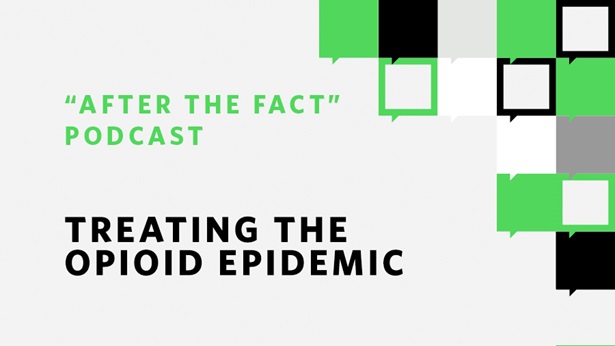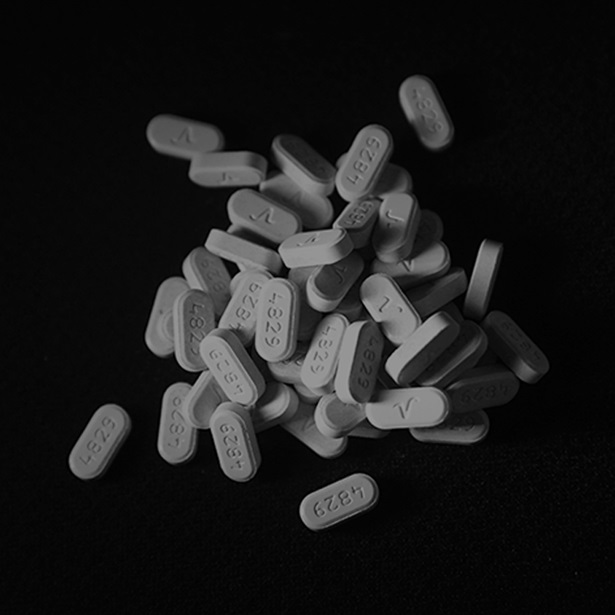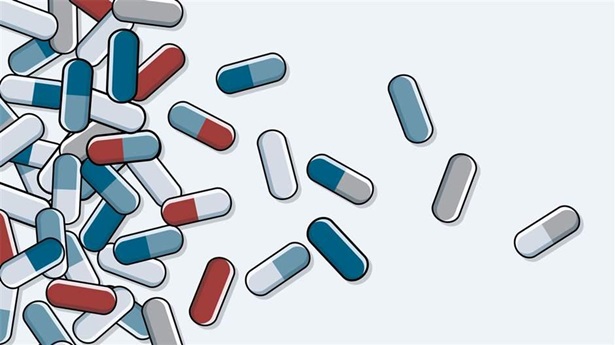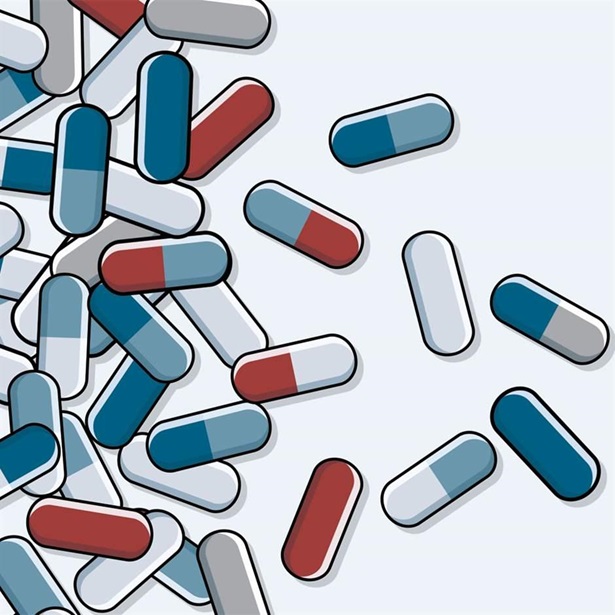The Case for Medication-Assisted Treatment
MAT can help people with opioid use disorders, but few have access
Overview
Every 16 minutes, a person in the United States dies from an opioid overdose.1 Opioid use disorder (OUD) is a chronic brain disease caused by the recurrent use of opioids, including prescription drugs such as oxycodone or hydrocodone and illicit substances such as heroin. Over time, a person with OUD becomes dependent on these drugs in higher and higher doses. This can lead to an overdose or death.
Prescription opioid overdose, misuse, and dependence cost the U.S. over $78 billion a year in health care, criminal justice, and lost productivity costs.
Source: Curtis S. Florence et al., “The Economic Burden of Prescription Opioid Overdose, Abuse, and Dependence in the United States, 2013” Medical Care 54, no. 10 (2016): 901–6, http://journals.lww.com/lww-medicalcare/Abstract/2016/10000/The_Economic_Burden_of Prescription_Opioid.2.aspx.
Like other chronic diseases such as diabetes or heart disease, OUD can be treated. The most effective therapy, called medication-assisted treatment (MAT), combines counseling or other behavioral therapy with medications approved by the Food and Drug Administration (FDA). The medications work to relieve the symptoms of opioid withdrawal or block the effects of opioids while behavioral therapies help patients improve coping skills and reduce the likelihood of relapse.2
Effectiveness of MAT
MAT = FDA-approved medication + behavioral therapy
FDA-approved medications include: buprenorphine, methadone, naltrexone
Behavioral therapies can include: counseling, family therapy, peer support programs
Patients who use medications to treat their OUD remain in therapy longer than people who don’t; they are also less likely to use illicit opioids.3 In addition, MAT helps to decrease overdose deaths4 and improve other health outcomes, such as reducing the transmission of infectious diseases, including HIV and hepatitis C.5
MAT is supported by organizations representing medical and behavioral health care providers, including the American Society of Addiction Medicine and National Council for Behavioral Health, patient advocacy groups, and federal entities including the White House Office of National Drug Control Policy and the surgeon general.6
Treatment gap
Despite MAT’s demonstrated effectiveness, many people do not have access to this therapy. Across the country, the number of people with opioid dependence far exceeds treatment capacity.7 Further, only 23 percent of publicly funded treatment programs report offering any FDA-approved medications to treat substance use disorders, and less than half of private-sector treatment programs reported that their physicians prescribed FDA-approved medication.8
In some areas, geography can contribute to difficulties in accessing MAT. For example, 53 percent of U.S. counties do not have a physician with the special waiver required to prescribe buprenorphine, one of the medications used for OUD treatment. This waiver is available only to physicians with an advanced certification or those completing eight hours of training; nurse practitioners and physician assistants can obtain this license after completing 24 hours of training.9
Even when a patient has access to a waivered prescriber, the full spectrum of drugs and behavioral therapies recommended by clinical guidelines may not be included in insurance benefits. Some treatments may also be covered only for a short period, which limits their effectiveness.10
The stigma often associated with substance use disorders—driven by perceptions that they are moral failings rather than chronic diseases—can exacerbate these treatment barriers. For example, negative attitudes among health care professionals toward people with OUD can contribute to a reluctance to treat these patients.11
Stigma has created an added burden of shame that has made people with substance use disorders less likely to come forward and seek help.—Facing Addiction in America: The Surgeon General’s Report on Alcohol, Drugs, and Health 2016
Closing the treatment gap
To increase access to MAT:
- Policymakers should ensure sufficient and ongoing availability of state and federal funding to expand access to OUD treatment.
- Public and private insurers should cover all FDA-approved medications and behavioral health services recommended by clinical guidelines for the treatment of OUD. This includes removing arbitrary dosing and duration restrictions.
- Cross-sector stakeholders, including representatives from law enforcement, public health, and patient care, should be involved in efforts to reduce stigma and barriers to treatment for this chronic disease.
Endnotes
- Rose A. Rudd et al., “Increases in Drug and Opioid-Involved Overdose Deaths—United States, 2010–2015,” Morbidity and Mortality Weekly Report 65, no. 50-51 (2016): 1445–52, http://dx.doi.org/10.15585/mmwr.mm655051e1.
- American Society of Addiction Medicine, “The ASAM National Practice Guideline for the Use of Medications in the Treatment of Addiction Involving Opioid Use” (2015), http://www.asam.org/docs/default-source/practice-support/guidelines-and-consensus-docs/asam-national-practice-guideline-supplement.pdf?sfvrsn=24.
- Richard P. Mattick et al., “Methadone Maintenance Therapy Versus No Opioid Replacement Therapy for Opioid Dependence,” Cochrane Database of Systematic Reviews 3 (2009): CD002209, http://www.ncbi.nlm.nih.gov/pubmed/19588333; Sandra D. Comer et al., "Injectable, Sustained-Release Naltrexone for the Treatment of Opioid Dependence: A Randomized, Placebo-Controlled Trial,” JAMA Psychiatry 63, no. 2 (2006): 210–8, http://archpsyc.jamanetwork.com/article.aspx?articleid=209312; Paul J. Fudala et al., “Office-Based Treatment of Opiate Addiction With a Sublingual-Tablet Formulation of Buprenorphine and Naloxone,” New England Journal of Medicine 349, no. 10 (2003): 949–58, http://www.ncbi.nlm.nih.gov/pubmed/12954743.
- Robert P. Schwartz et al., “Opioid Agonist Treatments and Heroin Overdose Deaths in Baltimore, Maryland, 1995–2009,” American Journal of Public Health 103, no. 5 (2013): 917–22, http://www.ncbi.nlm.nih.gov/pmc/articles/PMC3670653.
- Ibid.; Judith I. Tsui et al., “Association of Opioid Agonist Therapy With Lower Incidence of Hepatitis C Virus Infection in Young Adult Injection Drug Users,” JAMA Internal Medicine 174, no. 12 (2014): 1974–81, http://archinte.jamanetwork.com/article.aspx?articleid=1918926; David S. Metzger et al., “Human Immunodeficiency Virus Seroconversion Among Intravenous Drug Users In-and-Out-of-Treatment: An 18-Month Prospective Follow-Up,” Journal of Acquired Immune Deficiency Syndromes 6, no. 9 (1993): 1049–56, http://www.ncbi.nlm.nih.gov/pubmed/8340896.
- Substance Abuse and Mental Health Services Administration, “Medication-Assisted Treatment (MAT) Support Organizations,” last modified Sept. 25, 2015, http://www.samhsa.gov/medication-assisted-treatment/training-resources/support-organizations; National Council for Behavioral Health, letter to the Substance Abuse and Mental Health Services Administration, May 26, 2016, http://www.thenationalcouncil.org/wp-content/uploads/2016/05/NPRM-Medication-Assisted-Treatment-2.pdf.
- Christopher M. Jones et al., “National and State Treatment Need and Capacity for Opioid Agonist Medication-Assisted Treatment,” American Journal of Public Health 105, no. 8 (2015): e55–63, https://www.ncbi.nlm.nih.gov/pubmed/26066931.
- Hannah K. Knudsen, Paul M. Roman, and Carrie B. Oser, “Facilitating Factors and Barriers to the Use of Medications in Publicly Funded Addiction Treatment Organizations,” Journal of Addiction Medicine 4, no. 2 (2010): 99–107, https://www.ncbi.nlm.nih.gov/pubmed/20835350; Hannah K. Knudsen, Amanda J. Abraham, and Paul M. Roman, “Adoption and Implementation of Medications in Addiction Treatment Programs," Journal of Addiction Medicine 5, no. 1 (2011): 21–7, http://www.ncbi.nlm.nih.gov/pubmed/21359109.
- Roger A. Rosenblatt et al., “Geographic and Specialty Distribution of U.S. Physicians Trained to Treat Opioid Use Disorder,” Annals of Family Medicine 13, no. 1 (2015): 23–6, http://dx.doi.org/10.1370/afm.1735; American Society of Addiction Medicine, “Nurse Practitioners and Physician Assistants Prescribing Buprenorphine,” accessed Jan. 5, 2017, http://www.asam.org/quality-practice/practice-resources/nurse-practitioners-and-physician-assistants-prescribing-buprenorphine.
- National Center on Addiction and Substance Abuse, “Uncovering Coverage Gaps: A Review of Addiction Benefits in ACA Plans” (June 2016), http://www.centeronaddiction.org/addiction-research/reports/uncovering-coverage-gaps-review-of-addiction-benefits-in-aca-plans.
- Leonieke C. van Boekel et al., “Stigma Among Health Professionals Towards Patients With Substance Use Disorders and Its Consequences for Healthcare Delivery: Systematic Review,” Drug and Alcohol Dependence 131, no. 1–2 (2013): 23–35, http://dx.doi.org/10.1016j.drugalcdep.2013.02.018.


America’s Overdose Crisis
Sign up for our five-email course explaining the overdose crisis in America, the state of treatment access, and ways to improve care
Sign up

Treating the Opioid Epidemic
The nation’s opioid epidemic has been making headlines, and much is required to curtail this public health crisis. In this episode, we hear more about the problems associated with opiate misuse and the path forward.


This video is hosted by YouTube. In order to view it, you must consent to the use of “Marketing Cookies” by updating your preferences in the Cookie Settings link below. View on YouTube
This video is hosted by YouTube. In order to view it, you must consent to the use of “Marketing Cookies” by updating your preferences in the Cookie Settings link below. View on YouTube










